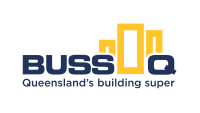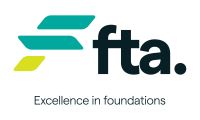First aid
Menu
- Membership
-
Services & advice
- Building, planning & development
- Contracts & disputes
- Employment & wages
-
Health, safety & environment
-
Common hazards
- 10 critical risk events and controls
- Asbestos
- Bullying & harassment
- Chemicals
- Confined spaces
- Electricity
- Excavation
- Falling objects
- Fatigue
- Heat-induced illness
- Heights
- Manual tasks
- Mobile plant
- Noise
- Psychosocial Hazards at Work
- Power tools
- Severe weather
- Silica
- Site security
- Sun & ultraviolet rays
- Storage & housekeeping
- Underground & overhead services
- Health & Safety Representatives (HSRs)
- Incident management
- Mental Health
- Risk management
- Safety documents & signage
- Safety health checks
- WHS self assessment tool
- COVID-19
-
Common hazards
- Laws, codes & regulations
- Licensing
- Members Legal
- Products
- Training
- What's on
- News & publications
- Homeowners
- About
- Contact
- Terms & conditions
Related links
You're legally responsible for ensuring that your workers have access to first aid. First aid is vital for keeping them safe and responding promptly in health and safety emergencies.
Your obligations
As an employer, you're responsible for:
- Providing first aid equipment and ensuring each worker has access to that equipment
- Ensuring workers have access to facilities for administering first aid
- Ensuring that an adequate number of workers are trained to administer first aid at the workplace or that your workers have access to an adequate number of other people who are trained to administer first aid.
Your requirements
First aid requirements vary between workplaces, depending on a number of factors. When determining what first aid equipment and facilities you need to provide, consider the:
- Nature of work
- Types of hazards present
- Size and location of the workplace
- Number of people at the workplace.
First aid kits
All workers must be able to access a first aid kit, so you’ll need to ensure there is at least one first aid kit at your workplace.
You should perform a risk assessment to determine what contents you’ll need in the first aid kit. On construction sites it’s likely that you’ll need a kit that is suitable for treating more substantial injuries.
First aid kits should be kept in a prominent and accessible location, and be able to be retrieved promptly.
First aid signage
Display well-recognised, standard first aid signs to help in easily locating first aid equipment and facilities.
First aid signs can be modified to suit your individual requirements but they must comply with AS 1319: 1994 - Safety Signs for the Occupational Environment.
Trained first aiders
When determining how first aid will be administered at your workplace you may decide to train one or more of your workers to administer first aid. The number you train should be determined through a risk assessment, though as a general guide – one first aider for every 50 workers in low-risk workplaces, and one first aider for every 25 workers in high-risk workplaces.
Alternatively, you could arrange for a first aider from another business (who shares your workplace), or one of your own workers with appropriate first aid qualifications, to administer first aid to your workers.
All first aiders should hold a nationally recognised statement of attainment issued by a registered training organisation for the nationally endorsed first aid unit/s of competency.
First Aid facilities
A risk assessment will help to determine what type of first aid facilities you need, for example a clean and quiet area in the workplace that gives an injured or ill person privacy workplaces.
A designated first aid room is recommended when there are 200 or more workers in low-risk workplaces or 100 or more workers in high-risk workplaces.





